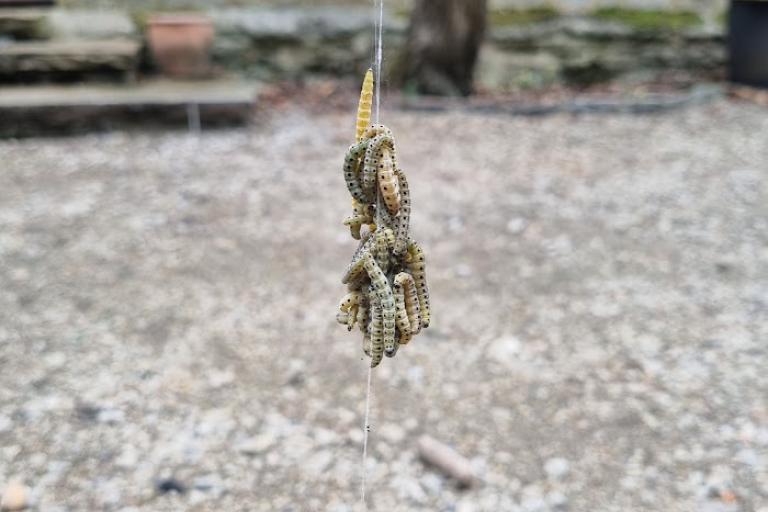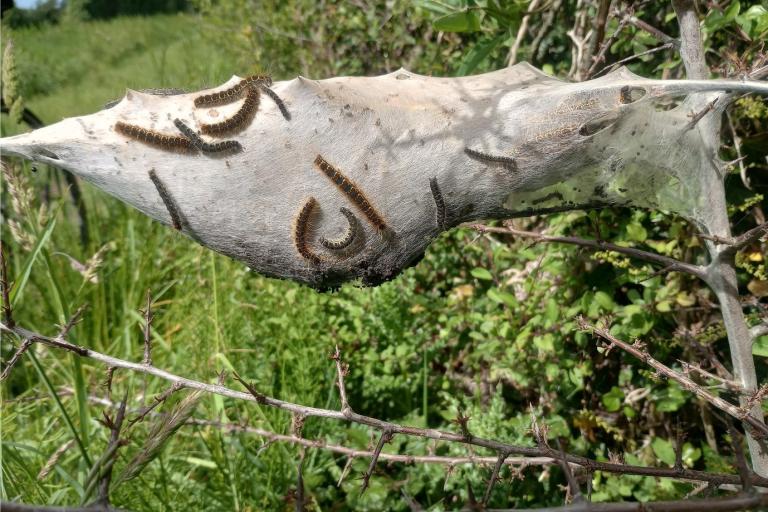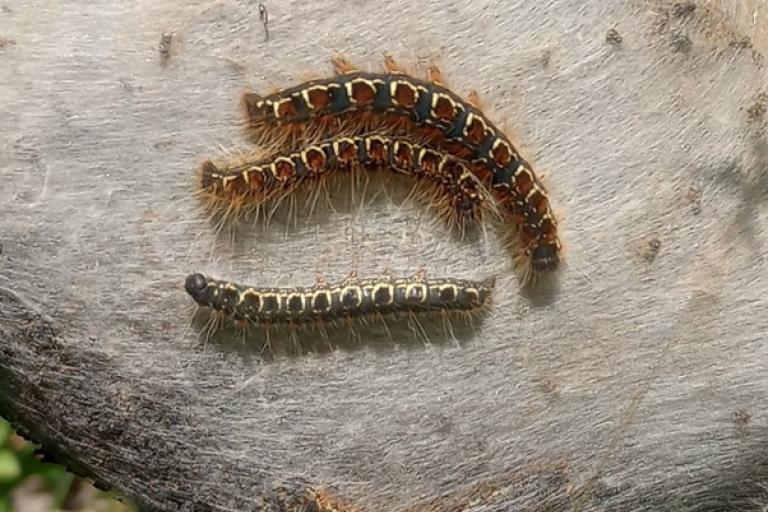article written by Ellen Lee, TVERC Biodiversity Data Manager
It’s not every day that a small moth gets into the national news, but this year it’s been hard not to notice what the spindle ermine has been up to! My news feeds have been full of “ghostly web trees”. Around 10 years ago, I used to get excited, jump off my bike, and take pictures of spindle ermine webs. In recent years I’ve given this up because, to be quite honest, if I’d carried on, I’d never have got anywhere at all. There are just too many of them, and every time you think you’ve found the biggest ever, there’s a bigger one around the corner!

Not all moths whose caterpillars create larval tents are so ambitious. While I was cycling around Somerset last week, I noticed another caterpillar tent, this time a much more robust one. It was around 30cm long and covered most of the smallish blackthorn bush its occupants had succeeded in defoliating. A few caterpillars were sunbathing on the outer surface, and more were joining them via a hole near the neck of the tent. What I’d stumbled across was a small eggar colony which usually numbers around 200 individuals and can be found on blackthorn or hawthorn. Apparently, the caterpillars of this and closely related species are eusocial which is unusual for moths. Somerset seems to be a good area for them, but in Berkshire and Oxfordshire, we hold only a handful of recent (post 2000) records, mainly from the west of Oxfordshire. So, I’m faced with the perennial question, are they genuinely rare in our area or merely under-recorded?

I suppose that, like many moth species that lay their eggs on hedgerow species, they are adversely affected by the usual hedgerow management, i.e. flailing in the autumn. Spindle ermine is probably less affected than most because its eggs are coated by the female in a sticky secretion that sets hard around them and protects them. Hedge management is probably what is behind the scarcity of black hairstreak butterflies that need old blackthorn for egg laying. There’s not much of that allowed to develop outside of nature reserves, even though blackthorn itself is ubiquitous.
One of the theories behind the extraordinary success of the spindle ermine this year is that the weather this spring has been relatively mild and calm, the webs haven’t been destroyed when still small by wind and rain. If that’s so, maybe it’s a good year too for small eggar caterpillar tent spotting too? So why not keep an extra keen eye on hedges as you’re out and about in the countryside in the next week or so to see whether we can add some more records of this elusive species to our database.
If you know the whereabouts of other species you suspect are under-recorded, we’d love to hear from you.
